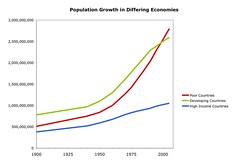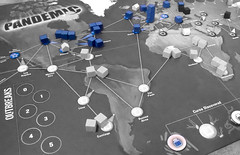AP Human Geography Population Flashcards
These are the vocabulary words from Rubenstein's AP Human Geography textbook.
Chapter-1: Thinking Geographically
Chapter-2: Population
Chapter-3: Migration
Chapter-4: Folk and popular culture
Chapter-5: Language
Chapter-6: Religion
Chapter-7: Ethnicity
Chapter-8: Political Geography
Chapter-9: Development
Chapter-10: Agriculture
Chapter-11: Industry
Chapter-12: Services
Chapter-13: Urban Patterns
Chapter-14: Resource Issues
Terms : Hide Images [1]
| 9728899709 | agricultural revolution | the development of farming |  | 0 |
| 9728899710 | arithmetic density | The total number of people divided by the total land area |  | 1 |
| 9728899711 | Census | A complete enumeration of a population |  | 2 |
| 9728899712 | Crude Birth Rate (CBR) | The number of live births in a year for every 1,000 people alive in a society |  | 3 |
| 9728899713 | Crude Death Rate (CDR) | The number of deaths in a year per 1,000 people alive in a society |  | 4 |
| 9728899714 | Demographic Transition | the process of change in a society's population as a combination of medical advances and economic development, affecting a population's desire and ability to control its own birth and death rates |  | 5 |
| 9728899715 | Demography | the scientific study of population characteristics |  | 6 |
| 9728899716 | Dependency ratio | the number of people under 15 and over 64 compared to the number of people in the workforce |  | 7 |
| 9728899717 | Doubling Time | the number of years it takes for an area's population to double |  | 8 |
| 9728899718 | Ecumene | the portion of Earth's surface occupied by permanent human settlement |  | 9 |
| 9728899719 | Epidemiological transition | The a distinctive cause of death in each stage of the demographic transition. Explains how countries' population change. |  | 10 |
| 9728899720 | Infant Mortality Rate | The total number of deaths in a year among infants under one year old per 1000 live births in a society |  | 11 |
| 9728899721 | Life Expectancy | The average number of years an individual can be expected to live given current social, medical, and economic conditions. |  | 12 |
| 9728899722 | Medical Revolution | medical technology from Europe and North America that was used to eliminate many diseases in the developing world |  | 13 |
| 9728899723 | Megalopolis | Term used to designate large coalescing supercities that are forming in diverse parts of the world. |  | 14 |
| 9728899724 | Natural Increase Rate (NIR) | The percentage growth of a population in a year, computed as the crude birth rate minus the crude death rate (NIR=CBR-CDR) |  | 15 |
| 9728899725 | Overpopulation | a situation in which the number of people in an area exceeds the capacity of the environment to support life at a decent standard of living |  | 16 |
| 9728899726 | Physiological Density | The number of people per unit of area of arable land, which is land suitable for agriculture |  | 17 |
| 9728899727 | Population Composition | Structure of population in terms of age, sex and other properties such as marital status and education |  | 18 |
| 9728899728 | Population Density | A measurement of the number of people per given unit of land |  | 19 |
| 9728899729 | Population Distribution | Description of locations on Earth's surface where populations live |  | 20 |
| 9728899730 | Population Pyramid | A bar graph that represents the distribution of population by age and sex |  | 21 |
| 9728899731 | Sex ratio | the ratio of men to women |  | 22 |
| 9728899732 | Standard of living | Goods and services and their distribution within a population |  | 23 |
| 9728899733 | Total Fertility Rate (TFR) | The average number of children a woman will have during her childbearing years. |  | 24 |
| 9728899734 | Zero population growth (ZPG) | A decline of the total fertility rate to the point where the natural increase rate equals zero. |  | 25 |
| 9728899735 | Agricultural Density | The ratio of the number of farmers to the total amount of land suitable for agriculture. |  | 26 |
| 9728899736 | Major Population Clusters -- East Asia | 1/4 global population: East China, Japan, Korea, and Taiwan |  | 27 |
| 9728899737 | Major Population Clusters -- South Asia | 1/4 of global population: India, Pakistan, Bangladesh, and Sri Lanka |  | 28 |
| 9728899738 | Major Population Clusters -- Southeast Asia | 600 million people: Indonesia, Philippines, and the river deltas of the Indochina peninsula |  | 29 |
| 9728899739 | Major Population Clusters -- Europe | 600 million people: 50 countries mostly clustered in Western Europe in Germany, Netherlands, Belgium, and France |  | 30 |
| 9728899740 | Industrial Revolution | a series of improvements in industrial technology that transformed the process of manufacturing goods and drastically altered society |  | 31 |
| 9728899741 | Thomas Malthus | (1766-1834) An English economist who argued that increases in population would outgrow increases in food production, which would lead to widespread famine and disease. |  | 32 |
| 9728899742 | One Child Policy | Chinese policy used to control population growth which began in the 1980's and restricted families to having only one child. |  | 33 |
| 9728899743 | Family Planning | The practice of controlling the number and frequency of children conceived usually through the use of contraception or voluntary sterilization. |  | 34 |
| 9728899744 | Sterilization | any process that eliminates a person's ability to produce children |  | 35 |
| 9728899745 | Epidemiology | The branch of medical science that is concerned with identifying, fighting, and preventing disease. |  | 36 |
| 9728899746 | Pandemic | Disease that occurs over a wide geographic area and affects a very high proportion of the population. |  | 37 |
| 9728899747 | Dr. John Snow | (1813-1858) English physician who used hand-drawn data layering on maps of London to identify and treat a cholera epidemic |  | 38 |
| 9728899748 | Sustainability | the level of development that can be maintained without depleting resources |  | 39 |
